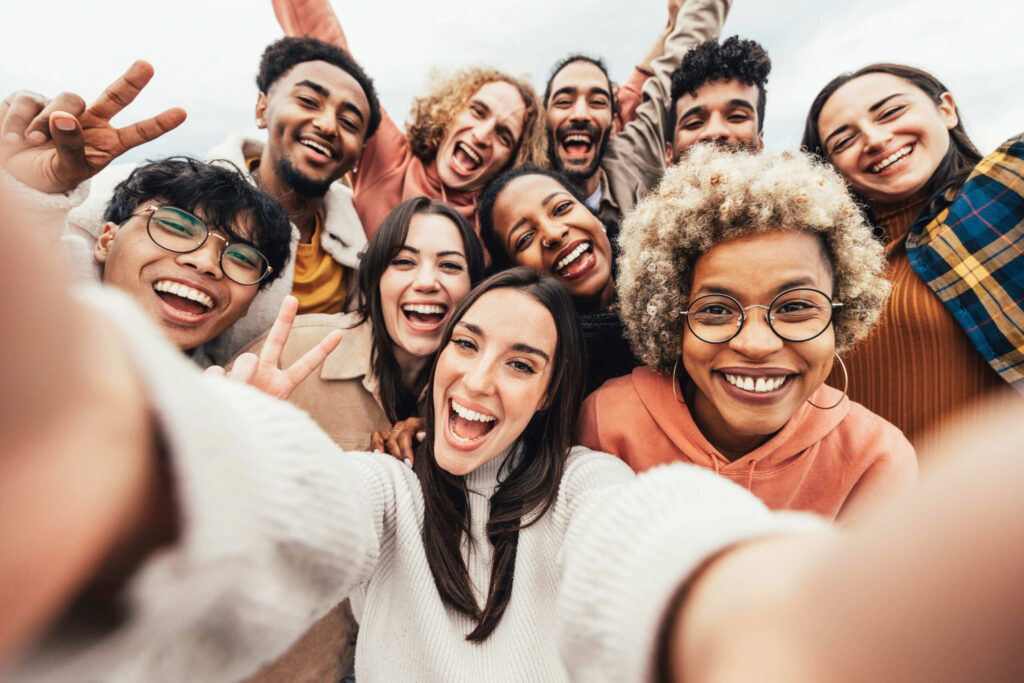Event Planning
Breaking Barriers: Tips for More Diverse and Inclusive Event Planning
In our dynamic world of events and passionate event-goers, embracing diversity and inclusion through your event planning will help create extraordinary experiences for all your attendees. These two essential principles are key ingredients towards unlocking the full potential of your events and celebrating the richness of human differences. Eager to learn more? Let's explore how to make events inclusive!
What is diversity and inclusion?
Diversity and inclusion (D&I) refers to the essential principles of fostering a sense of belonging, respect, and acceptance for all individuals, regardless of their backgrounds, abilities, or characteristics. Simply put, diversity refers to the rich variety of people's differences, including (but certainly not limited to!) race, ethnicity, gender, age, sexual orientation, and religion. As its closely linked yet distinct counterpart, inclusion emphasizes creating an environment where everyone feels valued, heard, and empowered to participate fully, without facing discrimination or prejudice.
D&I benefits our communities because it broadens our perspectives and ultimately leads to a more enriching experience for all attendees. Some common barriers to achieving D&I at your events include unconscious biases, limited awareness, and insufficient representation, which can hinder authentic connections with and among your entire audience. Overcoming these challenges requires proactive effort and a commitment to creating inclusive events.
Incorporating diversity and inclusion in your event planning
Consider setting clear goals in your event checklist related to D&I, like actively seeking out underrepresented communities or incorporating more inclusive event planning practices in various aspects of your event (e.g., speaker selection, marketing materials, venue choice). To help guide these efforts, engage with community leaders and advocates to understand specific groups, so you can tailor your events to resonate with their interests in an authentic way. Establishing event sponsorships with a diverse array of organizations helps connect us to a broader spectrum of voices too. Other examples of D&I-related planning efforts could include verifying that the venue you book has certain accessibility accommodations, selecting a date for your event that doesn't land on a religious observance day, or ensuring language interpretation services are available.
Promoting your events with diversity and inclusion in mind
It's important to note that genuinely connecting with your audience lies at the heart of successful event marketing! Here are a few ways to improve your marketing materials and better engage with specific communities:
Feature individuals from different backgrounds on your promotional materials, website, and ticketing page to prioritize more representation in your imagery, helping your event resonate with a wide range of attendees and better welcome diversity.
Create colorblind-friendly marketing materials (e.g., your website, social media ads, flyers) by minimizing certain color combinations close together like red and green or purple and blue.
Incorporate a brief written description to your images on your event's website (known as image alt text) so visually impaired individuals using screen readers can comprehend your visuals and graphics.
Offer your marketing materials in different languages. To help you prioritize which translations to provide, take a look at the demographics of your target audience and choose the common languages spoken among them.
Include captions in your videos to ensure participants who are deaf or hard of hearing can fully enjoy your content.
Participate in online communities or forums that align with your event's theme to help build meaningful connections and encourage diverse audiences to join your event.
Create content that reflects the varied interests of different communities to attract a more diverse attendee base.
Making your event's venue more inclusive
Now, it's time to choose the perfect venue for your event! When selecting a venue, confirm that it has accessibility options, making it easy for people with disabilities or mobility challenges to navigate your event space comfortably. This could include providing accessible parking, elevator access, as well as wheelchair-accessible ramps and seating. Live streaming your in-person event and hosting additional virtual events can give even more people the opportunity to enjoy your event remotely (especially those who might not be able to attend otherwise). You may also consider whether your venue has gender-neutral bathrooms available for those who may desire them.
If you're serving food, ensure your menu has vegetarian, vegan, and other options for those with dietary restrictions. Think about how your range of food options could cater to people of different cultural backgrounds and create a welcoming atmosphere for all attendees. To help you in these efforts, TicketLeap lets you add custom registration questions at checkout, so you can let your ticket buyers request any specific accommodations they might need.
Fostering diversity and inclusion at your event
Now that you've got your event planning down, let's cover some strategies to enrich your attendees' experience on the day of!
Train your event staff on how to create an inclusive environment for all attendees, free from any unconscious bias. Set clear guidelines that emphasize treating every attendee with equal respect and consideration.
Consider hiring bilingual staff or translators to assist attendees in their native language.
Encourage your diverse array of sponsors to engage with attendees on topics they're passionate about and spread awareness regarding relevant social issues.
Organize fun activities that require attendees to work together in diverse teams to promote cross-cultural collaboration.
Use decorations and signage that reflect a wide range of cultures, identities, and perspectives. This can create a more welcoming environment and help your attendees feel more represented.
Improving your future diversity and inclusion efforts
When hosting your diverse event ideas, it's important to continually evaluate whether your efforts are sufficiently and authentically promoting diversity and inclusion at your events. Sending out a post-event survey to your attendees is definitely a great idea to gauge the effectiveness of your D&I initiatives. Through your questionnaire, you could gain their feedback on whether they've felt included, whether your efforts successfully represented various communities, and where you can improve for the future. Armed with these insights, you can take proactive steps to ensure your future events are more diverse and inclusive!

Event Registration Made Easy
Stay Ahead With Our Latest Event Articles Delivered Straight to Your Inbox
Subscribe today to elevate your event planning game!
Receive exclusive insider tips on how to:
- Plan a successful event
- Maximize your ticket sales
- Optimize your marketing campaigns
- Ensure your event day runs smoothly





